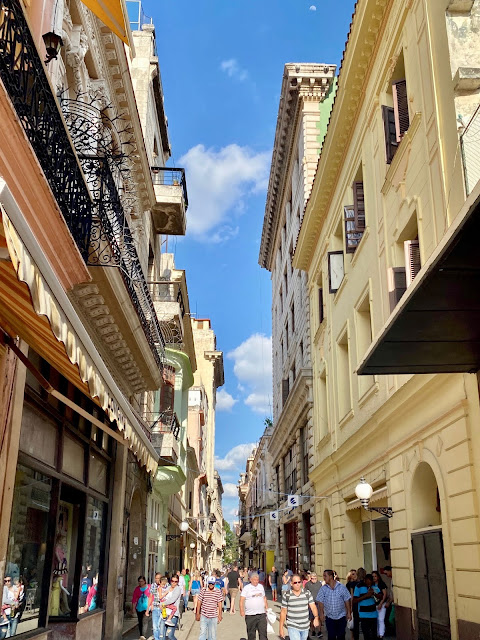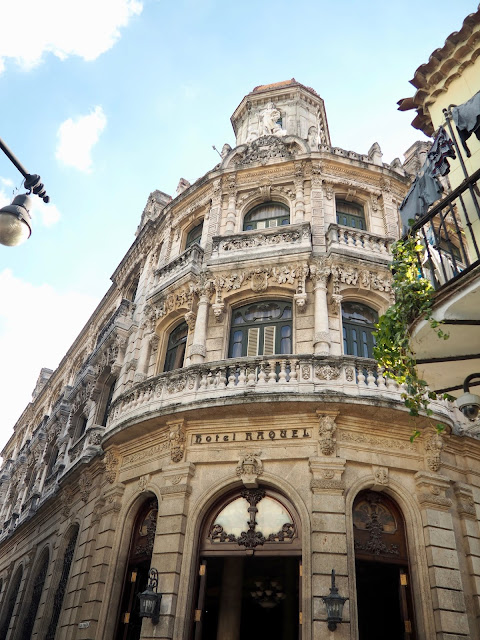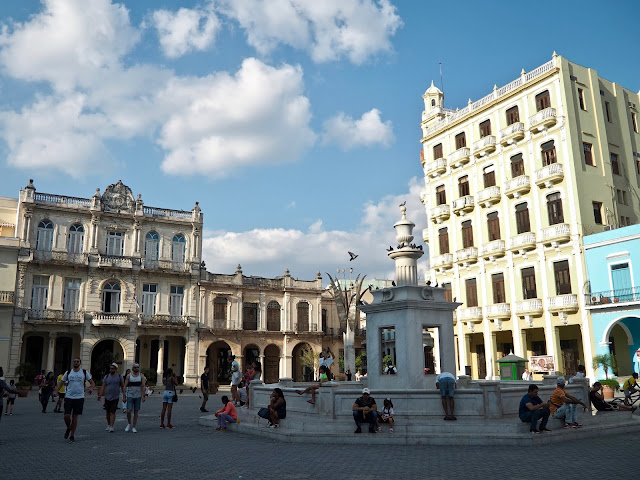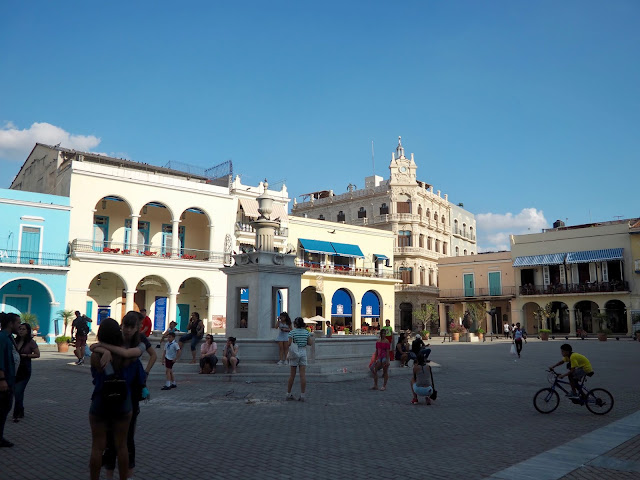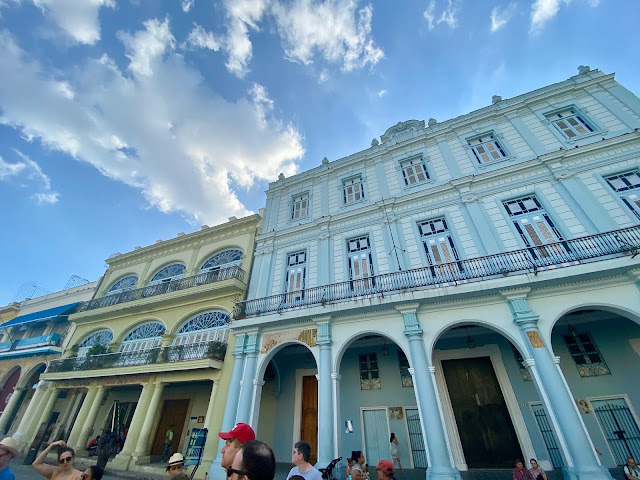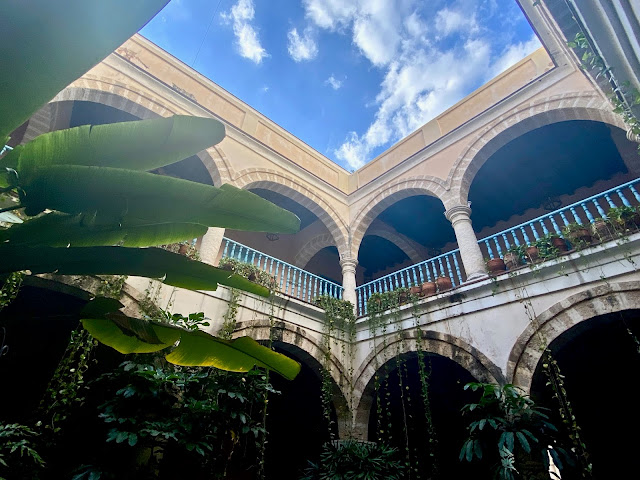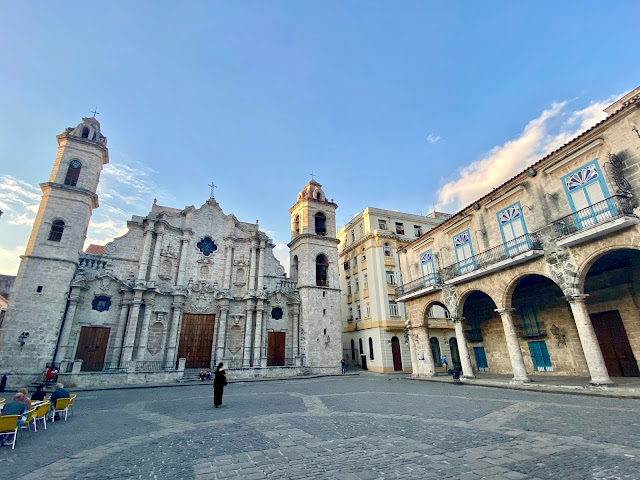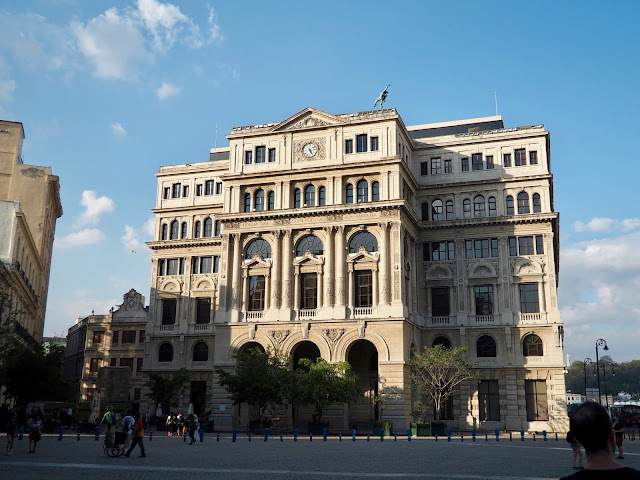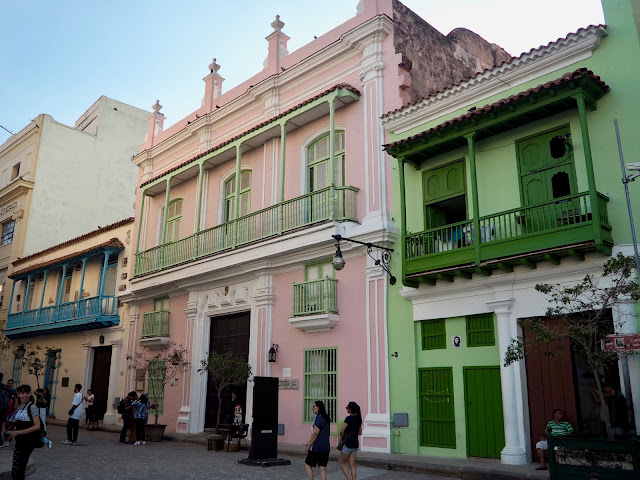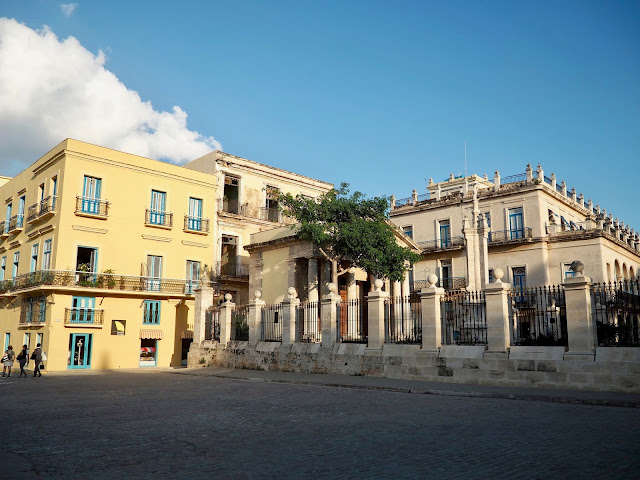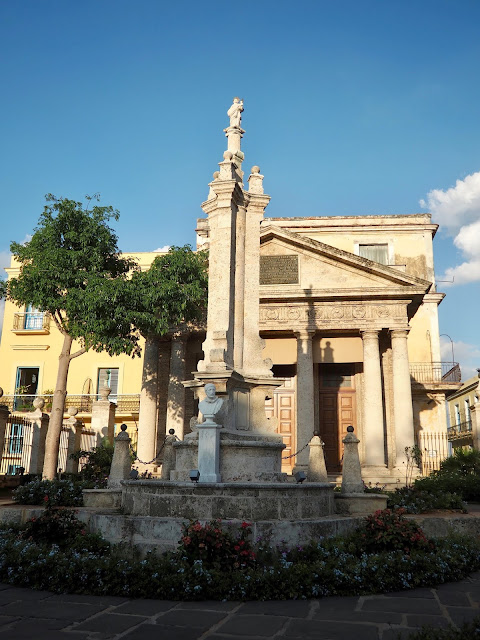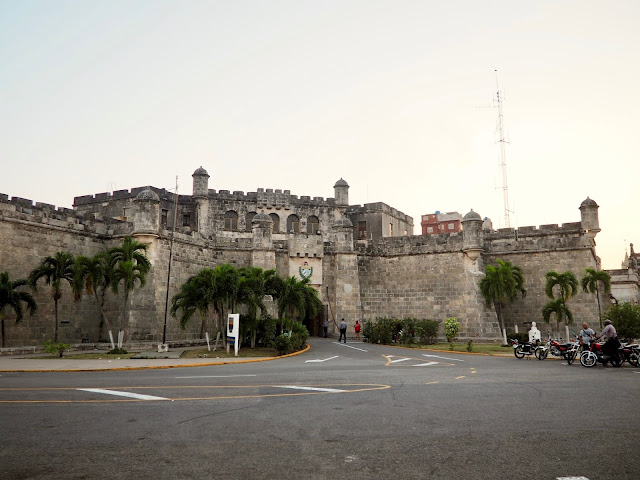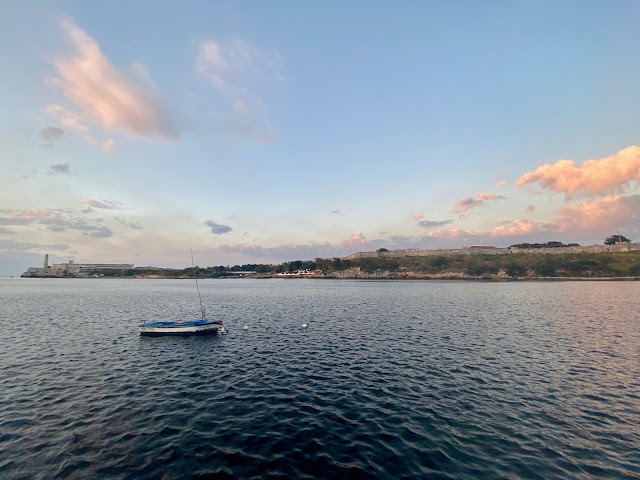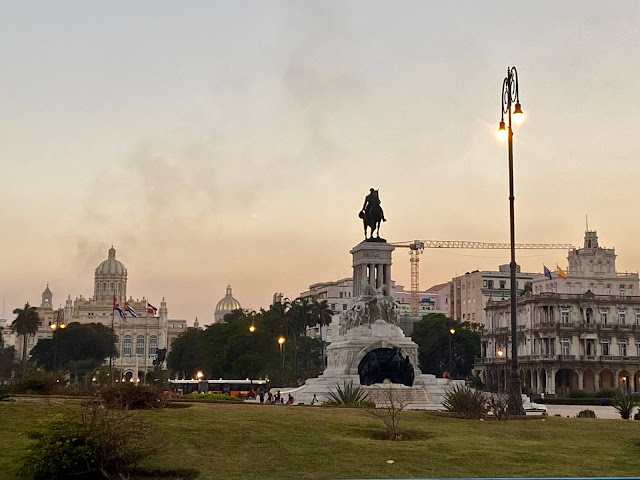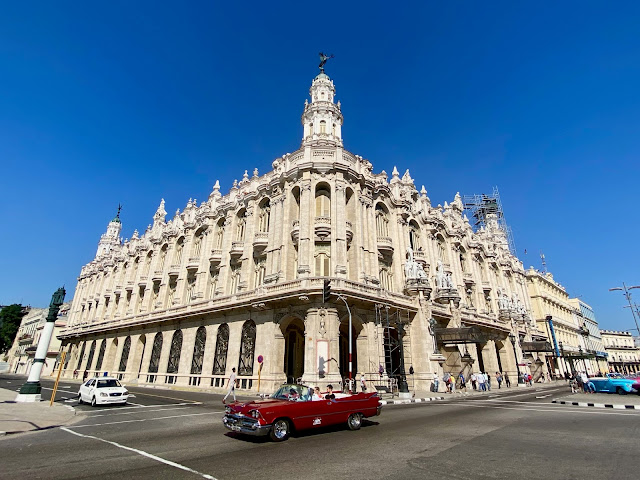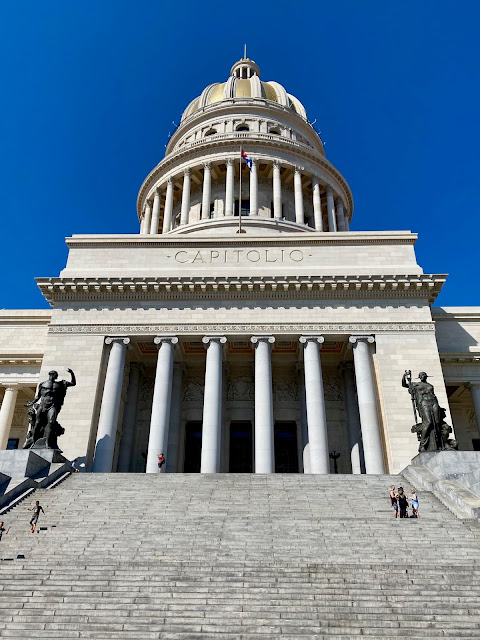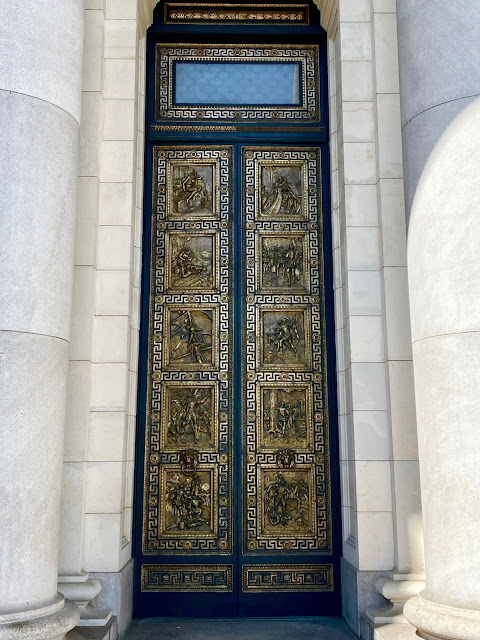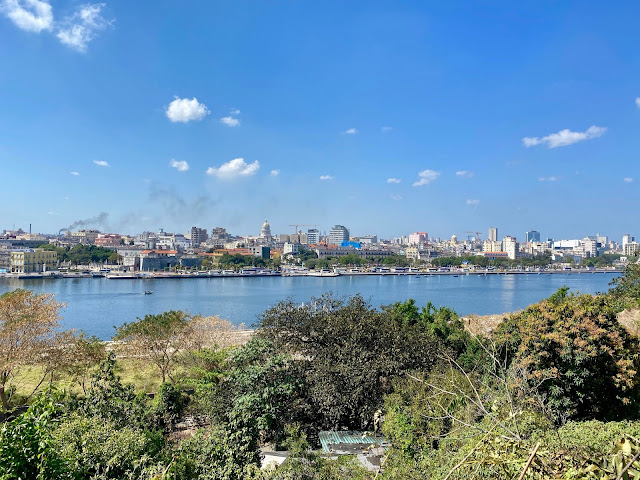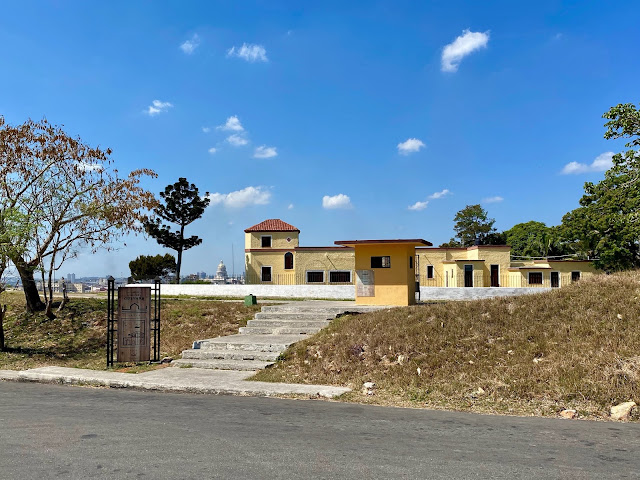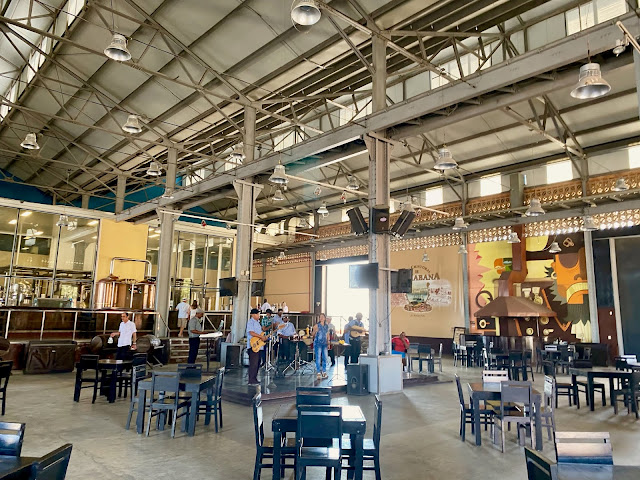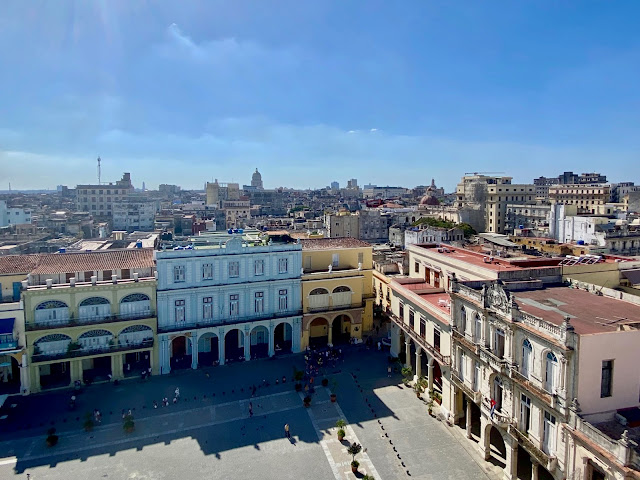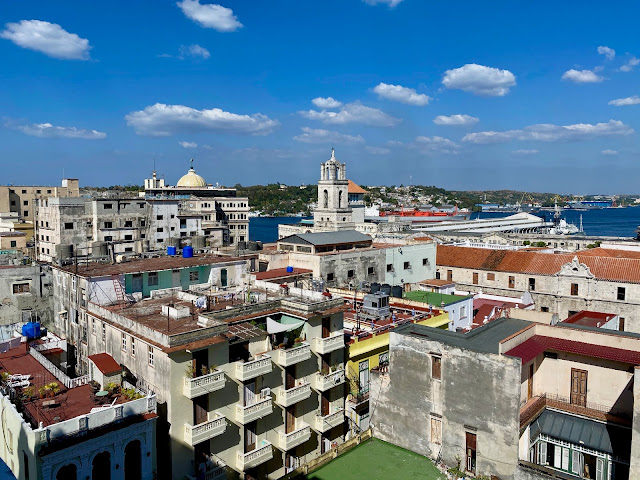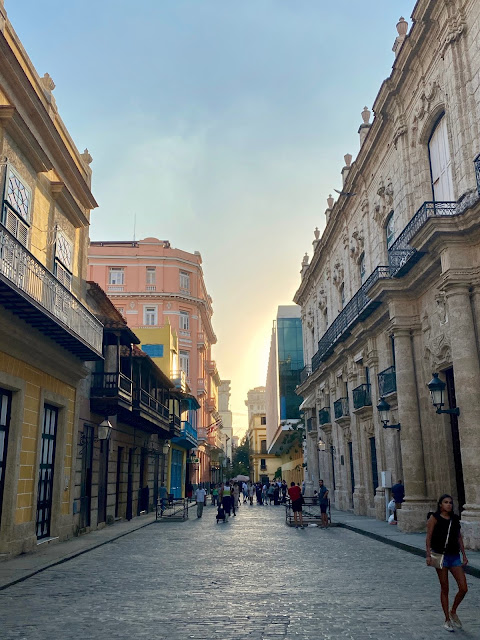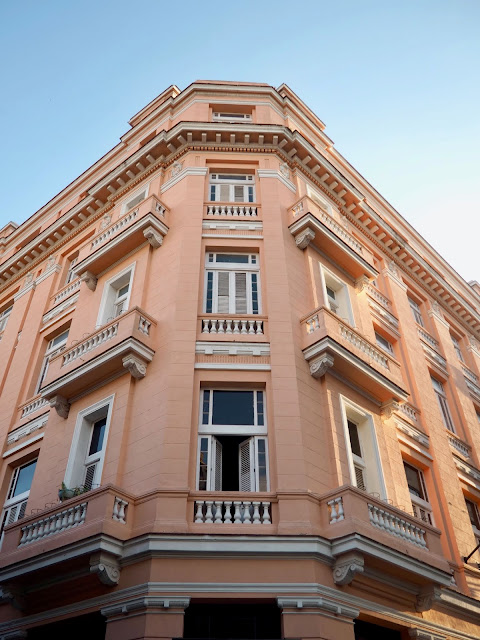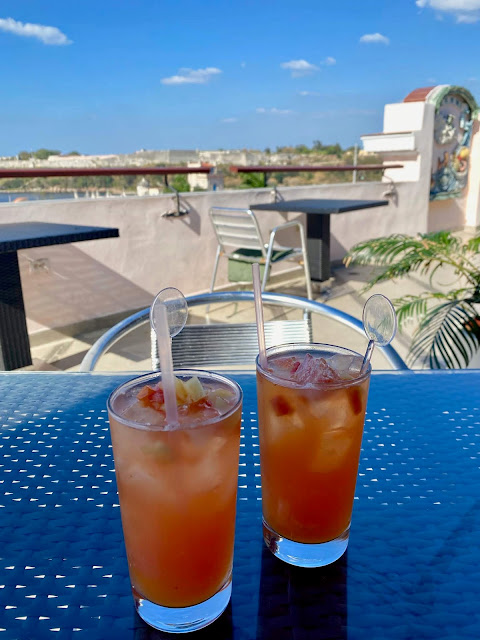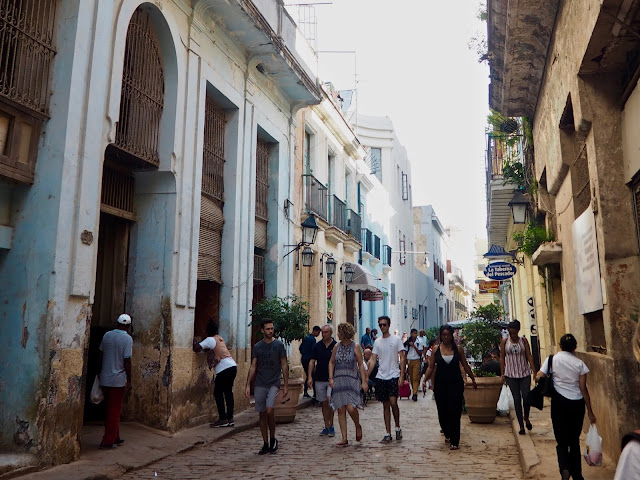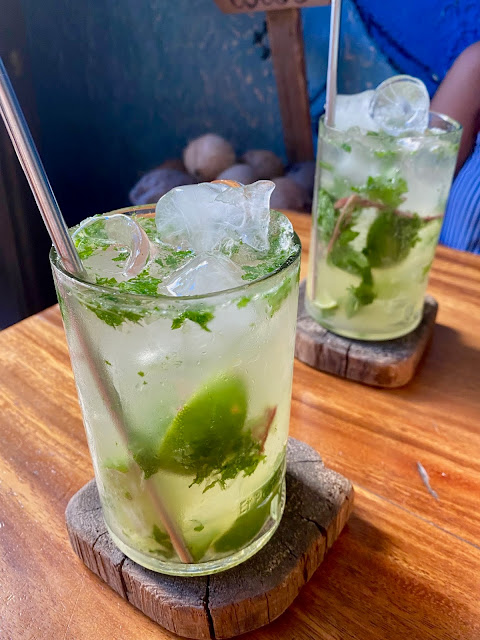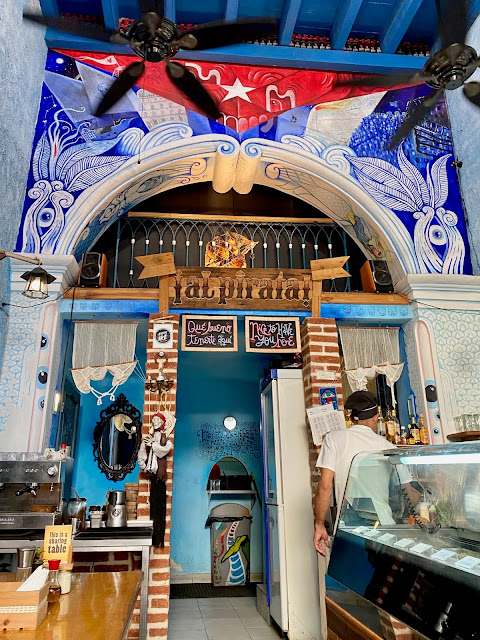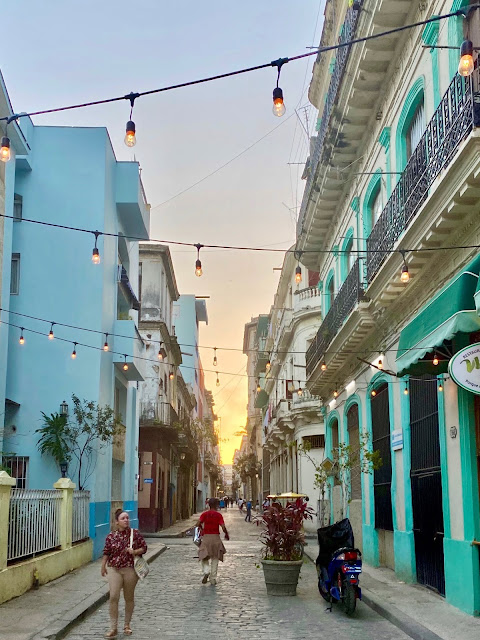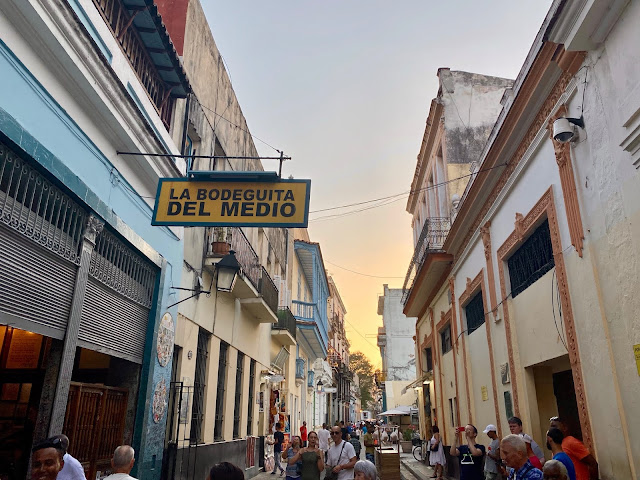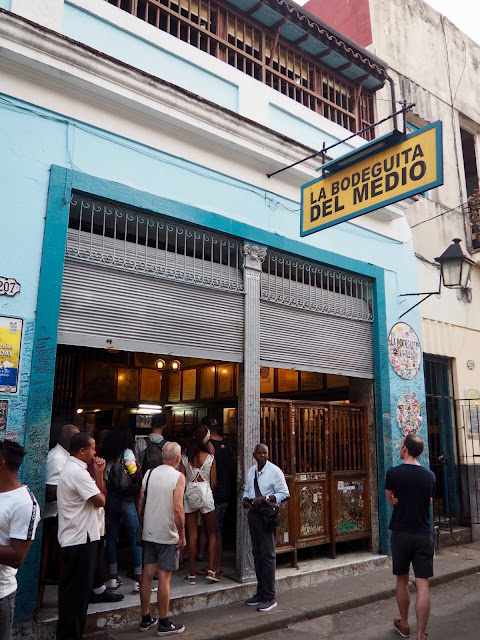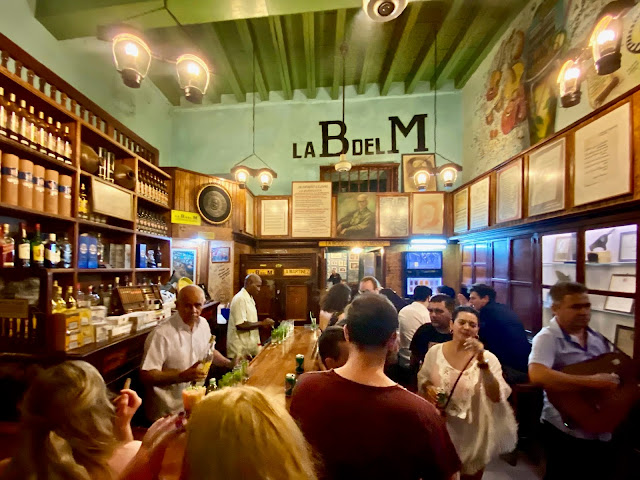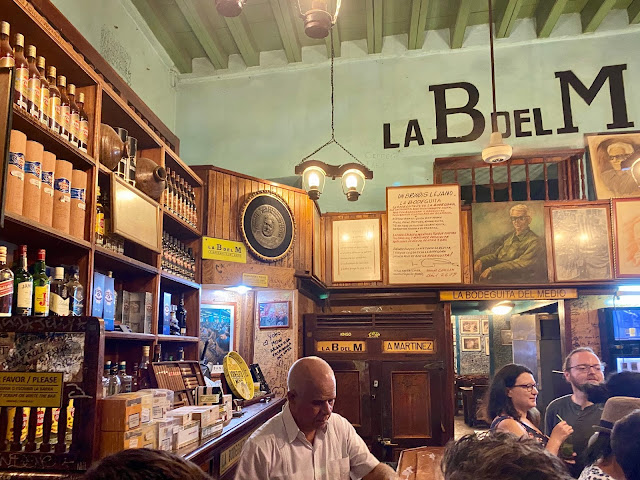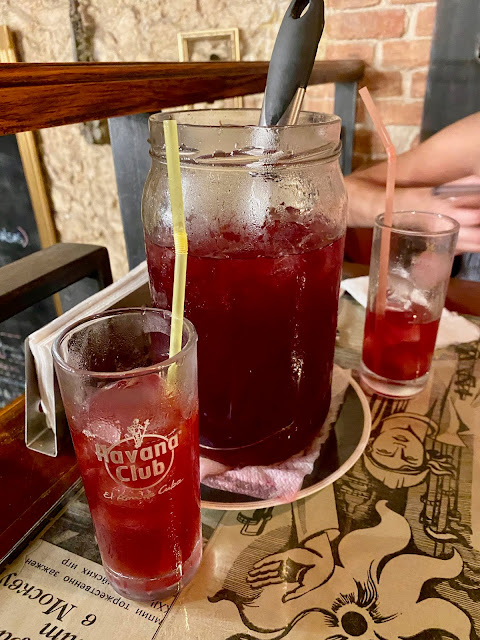
Havana, Part 1 | Cuba
The final destination of our 3 week Mexico and Cuba trip was Havana – or La Habana, as it’s properly called – the Cuban capital. We spent 4 days there, so I’m splitting this post into two parts, rather than one gigantic one, each part featuring two of our days there. Havana was an interesting one for us, as our normal approach to seeing new cities is to check out all the significant historic sights – but Havana actually has relatively few of these. Instead, it’s more about just exploring, taking it slow, and soaking in the atmosphere, which it took us a day or so to get the hang of!
Day One
We first had to travel back from Trinidad, on the morning of our third day in Cuba. We had booked tickets in advance for the Viazul tourist bus, which serves the route a couple of times a day. This took a bit longer than the taxi ride, around 5-6 hours typically, but it was a much cheaper option. From the bus station, there were taxi attendants who were able to put us in a shared colectivo taxi to our hotel on the edge of Old Havana, to save some costs there. We weren’t able to check into the room yet, despite it already being 2pm in the afternoon; turns out normal check out and check in for Cuba is 12pm and 4pm, which is later than we were used to. So, despite being quite tired after the journey, we had to venture out into the city immediately. We had decided to join a free tour at 4pm, so we had a couple of hours to kill.
I’ll be entirely honest and get this out of the way; I did not enjoy those 2 hours. We’d heard such good things about Cuba and Havana before coming here, but we were quite disappointed by our first impressions. I was already struggling a bit with some of the cultural norms, like the excessively laidback nature I mentioned in my last post. In Havana particularly, I wasn’t a fan of how crowded and loud and in-your-face things could get in the narrow, cramped streets, which to be fair, has been true of other countries I’ve visited too. It just doesn’t suit my nature, but I can respect that it’s the culture and the norm there. Although, we did encounter a couple of downright rude people in those first couple hours, including our hotel receptionist, and a cafe owner who had absolutely no interest in serving us as tourists, which didn’t help with the first impressions. The thing I really couldn’t stomach though was the sexual harassment – we were catcalled constantly throughout our time in Havana, far worse than anywhere else I’ve travelled to, and it was uncomfortable, frustrating, and exhausting. I want to get all that out the way just now, as this may colour some of the rest of my descriptions of Havana. Also I want to highlight that when travelling, not everyone will like every place they visit. It might look glamorous and exciting on Instagram, but there’s always more to everyone’s stories, and I want to be honest about my experience.
All that said, Cuba and Havana did grow on us, and by the end of our time there, we were a little more at ease – well, up until I was straight up assaulted when a guy grabbed my arse in the street. But Cuba was definitely a very interesting and unique experience. I’ve travelled enough now that I don’t experience culture shock all that often, but I definitely had some here, and that’s not a bad thing. It forced me to be challenged by travel again, to think about how I was feeling and reacting to this different culture, and try harder to understand, accept, and embrace it as much as possible. We encountered plenty of people who were perfectly nice and friendly, and we discovered many places and aspects of culture there that we did enjoy. I don’t think I’ll ever rank it amongst my favourite places I’ve been, but I was definitely glad that we went for the experience.
We spent those first couple hours just wandering the streets of Old Havana (La Habana Vieja) and stopping off for a coffee, before heading to the meeting point for the free tour we’d looked up (simply called Free Walking Tour Havana). Cintia is also a free tour guide like myself, so we always like doing them to support the industry, and it’s a good way to get your bearings and an overview of a new city, and pay what you felt it was worth at the end. The tour guide was very animated and energetic, although it was a little hard to hear him sometimes when he explaining things whilst walking through these narrow, crowded streets, However, they did split us into much smaller groups than we were expecting for this very reason, and the streets are too narrow to offer many places to stop and gather a group to listen anyway. Fortunately, I had already read the summary in a guidebook, covering the island’s colonial history, through to the Communist revolution, which helped contextualise the rest of the tour when I couldn’t hear him, as well as most of our stay in Havana. The tour took over 3 hours in total, which is a little more than my concentration can handle, especially when I was feeling tired and on edge anyways. We certainly saw a lot of stuff in that space of time though, and he was able to give us directions, recommendations and answer many questions along the way.
Old Havana is a bit of a maze of streets, but doesn’t actually cover a huge area of land, there’s just a lot crammed in there – I’ve actually spread my photos through both my Havana posts, as we covered so much on the tour that I didn’t need to take more of the same places later! The city’s architecture is impressive, echoing the glamour of its heyday, so it does feel like you’ve tumbled through time a bit, though everything is somewhat faded now. He took us to all the major squares in the area, and pointed out the important buildings in each one: Plaza Vieja, which has a mixture of baroque and art nouveau buildings, and the city’s camera obscura; Plaza de la Cathedral, where obviously you can find the cathedral; and Plaza de San Francisco de Assis, where lies the old monastery and church (now an art museum), and a statue of the eponymous saint. We passed by the remnants of the old city wall and part of the city’s original 16th century aqueduct. He took us into a couple of hotels as well, which was surprising at first, but it was mainly to show us different architectural styles on display. There were often courtyards in the centre of them, full of plants and fountains and natural light streaming in from above. These were also places where artists and other people of note would have gathered in the past. He took us to the places connected to Ernest Hemingway, who used to spend a lot of time in the city, and which Cintia and I planned to revisit later, including the Hotel Ambos Mundos, and the original La Bodeguita del Medio – where we had an impromptu 10 minute break while our guide started dancing in the street with one of the guests in the group!
We stopped off in a rum and cigar shop, two of Cuba’s most famous exports. There was another group in at the same time, so it was fairly crowded inside. Cintia and I didn’t get anything in that moment, but we did make note of it for later, as we both wanted to get some rum to take home. In the same square, Plaza de las Armas, we saw the monument where the first Mass took place in Cuba, and the Museo de la Ciudad, which was formerly the Palacio de los Capitanes Generales, and has an entirely wooden street outside it. We then walked over to El Malecon, the esplanade running around the coastline from the harbour to the north of the city. We were a little late to see the proper sunset, but we did get to see the sky aglow with the colours of dusk. Across the water in the Casablanca neighbourhood is the Castillo and the La Cabaña, two massive fortresses stretching far along the coast. The tour finished here, looking down the Paseo de Marti, with the National Capitol Building and the Maximo Gomez Monument (military commander during Cuba’s war for independence from Spain) visible in the distance, and we tipped the guide and gave our thanks before the group dispersed.
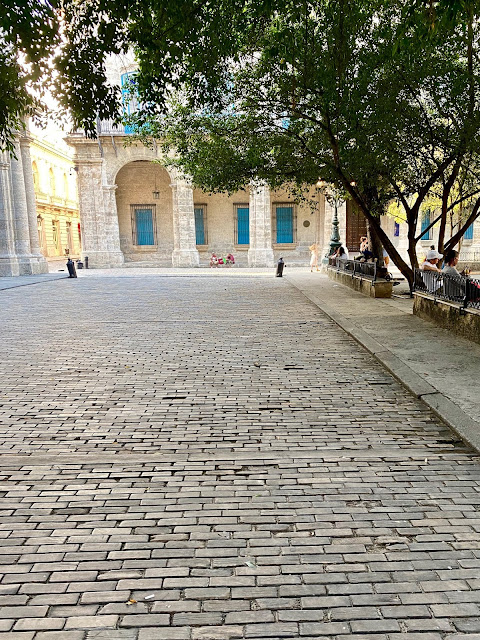 |
| The wooden paved street! |
At this point, we were now able to check into our hotel room, so we headed back to take a long-awaited rest there for a while. We headed out again for a late dinner, wandering down to Parque Central, then heading along the Calle Obispo, which is a pedestrianised street with many food and shopping options. We were looking for a restaurant the guide had recommended (with free WiFi of course!) and found it entirely by accident; many restaurants are located in the upstairs of buildings, so they have staff on the street trying to entice people inside, as they would struggle to get customers otherwise, and we recognised the name of the restaurant (which I have now forgotten again) we were looking for from one of them. We sat on a balcony looking down onto the street, people watching as we ate, while a live band played inside, as seems to be the norm in every restaurant in Havana! After dinner, we attempted to get online in a public hotspot, since the restaurant’s WiFi hadn’t worked at all and we had none at the hotel, but we struck out there as well (see my last post for an explanation of Cuban internet!). It was nice to disconnect for much of the day, and we were content to do so, but we frustrated to not be able to check in with family and friends and such just for 10-20 minutes, so we just turned in early for the night at that point.
Day Two
Instead, we set off across Old Havana to the ferry port, for the short journey across the harbour to Casablanca. We landed in a small town square, surrounded by much smaller, simpler buildings than those back across the water. We were glad to have downloaded some offline maps – which I highly recommend when travelling anywhere really – as we went in search of the road up to the fortresses we had seen from El Malecon the night before. It was a blisteringly hot day, and the road wound slowly uphill, so it was hard going and we were soon sweaty and out of breath in the heat. Along the way, we passed the Christ of Havana statue on the hillside, and Ché Guevara house; although the latter is a crucial figure in Cuba’s revolutionary history, and famous worldwide, we’d already read that the house isn’t really worth visiting inside. We eventually came to the San Carlos de la Cabaña Fortress, stretching along the roadside, with a few weapons on display. It took us a while to find where the entrance was, as no one else seemed to be going inside. Mostly we saw people on classic car tours, stopping by for a quick look, then continuing on. However, it looked distinctly less impressive from here than it had across the water, so when we found out what the entry fee was, we decided it wasn’t really worth entering.
I should point out, since I haven’t mentioned this yet, that Cuba has two currencies, CUC (convertible pesos) and CUP (Cuban pesos). The latter is mostly used by locals, as you can only convert foreign currencies into the former. Most attractions will have the entry fee listed as the same in both currencies, e.g. 5 CUC for foreigners and 5 CUP for locals. However, 1 CUC is worth 25 CUP, so locals enter for a much lower price in truth. Anyways, we headed back down the hillside, enjoying the views of Old Havana as we went, stopped in the town square to finally connect to some working WiFi for a little while, then caught the ferry back across the harbour.
The rest of the day ended up being a bit of a self-guided food and drink tour of the city. It was too hot to walk around excessively, and the heat can make me grumpy – as discussed, I was still treading the line as to how much I liked the city at this point – so taking it slowly, sitting in the shade, having a drink… that seemed the best way to embrace the laidback Cuban lifestyle! We’d also started to realise that there wasn’t a huge list of sights to see by this point, especially having covered a good amount on the tour the day before, and the Cuban portion of our holiday was meant to be more relaxing anyways. We started this off near the ferry port, just down the road at the Cerveceria Antiguo Almacén de la Madera y el Tabaco. The name is very literal when you translate it, as it’s an old wood and tobacco warehouse, which has now been converted into a brewery. As you’d expect, it seems huge when you walk in, as it’s still got the full warehouse ceiling height (no second floor addition), and the decor still looks very industrious. Of course, there was a live band playing, and with the doors wide open, the music carries all around the surrounding area. We got a table outside in the shade, to watch the harbour as we drank our beers. The venue and atmosphere were definitely pretty cool, even if it was only midday and they had just opened for the day.
We wandered back up into the town centre again, and made our way to the Plaza Vieja, taking in all the colourful architecture along the way. We’d seen the square yesterday on the tour already, so this time we were heading to the camera obscura, located on the roof of a tall tower building in the corner of the square. There’s a camera obscura in Edinburgh, so I’ve seen it in action before, but it was new to Cintia. It’s an invention created centuries ago, and the technology in it hasn’t changed since. It uses natural light, lenses and a mirror to project a live image from outside, via a periscope on the roof, on to a large disc inside a dark room. The operator can move the periscope around to zoom in and out, and see a 360 degree view of Havana’s rooftops, with people going about their lives. She pointed out various buildings and sights around the city, and we watched builders at work and people drying their laundry on the rooftops. Havana’s camera obscura is also the only one in Latin America, gifted by the town of Cadiz, Spain. After the camera show, we were able to enjoy more of the views from the roof terrace outside, before heading down to the square again.
Our food & drink adventure then took us for lunch near the Plaza Vieja; we ended up in an Italian-Cuban place (they literally handed us two separate menus, one for each cuisine), after being accosted by one of the many promoters out in the street. It did the job fine, but was mostly just a refuelling stop, and not one of our highlights of the day. Once our bellies were full, we moved on to the Hotel Ambos Mundos, a bright pink building, famous as the hotel where Ernest Hemingway often stayed during his visits to Havana. We’d seen the lobby on the walking tour the day before, where there is a display of photos of the writer along one wall. This time though, we entered the iron-wrought lift, where the attendant escorted us up to the bar on the roof terrace; yes, we spent a lot of time in Havana on roof terraces! We settled at a table for some cocktails, of course with rum as the base, this time trying the house cocktail, named after the hotel, which was delightfully fruity and refreshing.
Next up, we ambled over to the Plaza de la Cathedral, to a cafe down one of its side streets that we’d spotted the day before, Al Pirata. It had jumped up to us, partly for the name, and partly for the ice creams we’d seen inside, which was our next course of the day, as an afternoon snack. The cafe is a tiny little place, but with big wooden picnic tables for shared seating. We started off with ice cream, followed by mojitos, which came in one size: jumbo. They were truly massive, but delicious, and we were very happy to note that they were served with reusable metal straws instead of plastic ones. We’d managed to reach the late afternoon by this point, so we made our way back to the hotel, trying to take streets we hadn’t seen yet to get there. We stayed in to rest and get out the sun for a while, before heading out for dinner again later.
Before dinner though, we went back to the original La Bodeguita del Medio, to actually stop and have a mojito this time. This is the place made famous by Hemingway, who declared their mojitos to be his favourite, and now it’s constantly mobbed by tourists from around the world. They also have a board outside showing all the famous faces who have passed through their doors over the years, and it was very cool to know that we were now in the same bar as all of them. Since so many people do as we did, and just come for a mojito, the front bar is reserved for that, with many people taking their drinks out into the street, and the back is only for people actually having a meal. It’s fairly unassuming from the outside, but the decor inside is walls painted blue and covered in the scribbles of all the patrons over the years, an old-fashioned wooden counter bar, shelves lined with rum and cigars, and glasses cases and frames of pictures and artefacts from over the decades since it opened in 1942, including a photo Fidel Castro himself paying a visit. There was a band playing, and it was packed inside, but I insisted we stayed inside with our drinks, rather than taking them into the street, to make the most of being in this famous venue. The two older gentlemen working behind the bar were clearly making the mojitos en masse, pouring out a dozen at the time, but with practiced skill and measurements – and it tasted as good as Hemingway described!
After finishing our drinks, we moved on to find a place for dinner, seeking out Tabarnish, which had been recommended to us by a friend. We didn’t know until we arrived though that it was actually a Russian influenced restaurant, both in the cuisine and the decor inside, with our table top depicting a newspaper entirely in Russian, and all sorts of random objects around the walls. We sat on the upper balcony inside, which was nice, being a little quieter and more secluded than the ground floor, and we could still enjoy the music from the live band, which we noted were all-female, a first so far on the trip. It was comfortable, the food was good, and we got a massive pitcher of sangria between us – plus the free WiFi did actually work this time! We lingered over our meal and drinks for ages, as you should when on holiday, in a nice venue with good company, before turning in for the night.
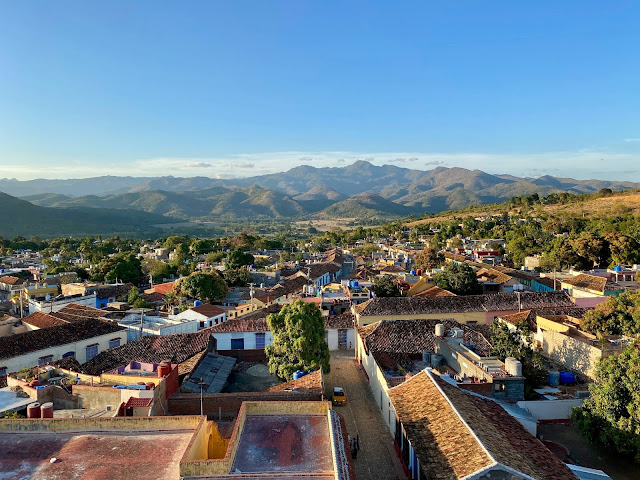
Trinidad | Cuba
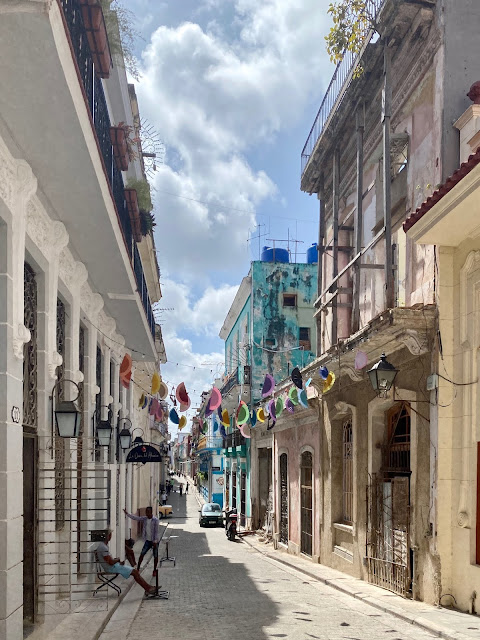
Havana, Part 2 | Cuba
You May Also Like
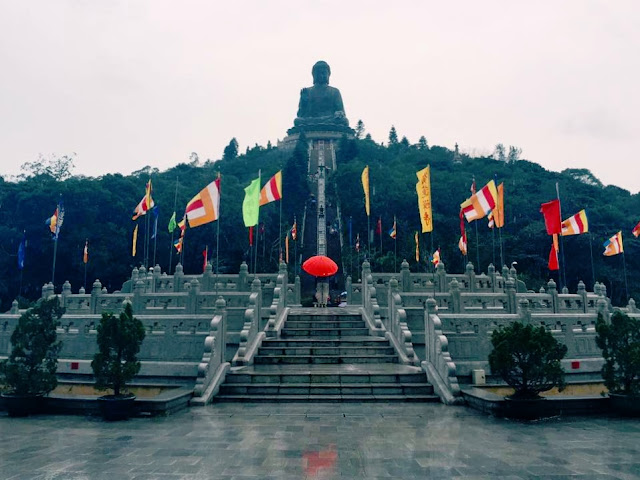
It’s So Very Cold
27 January 2016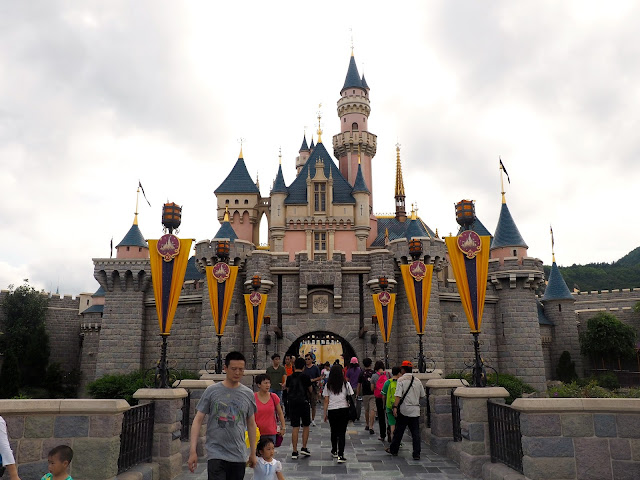
Disneyland Hong Kong
20 June 2016
